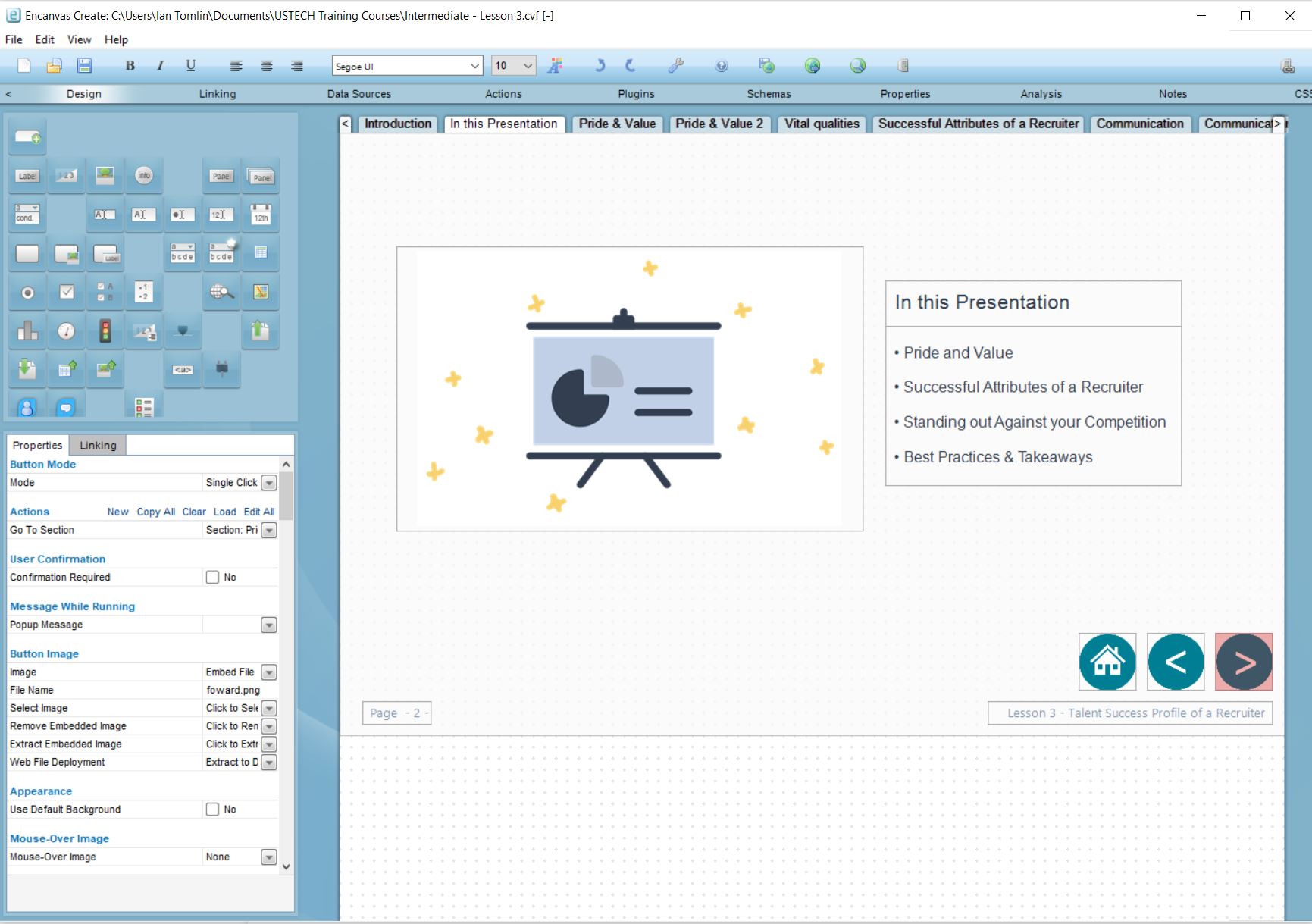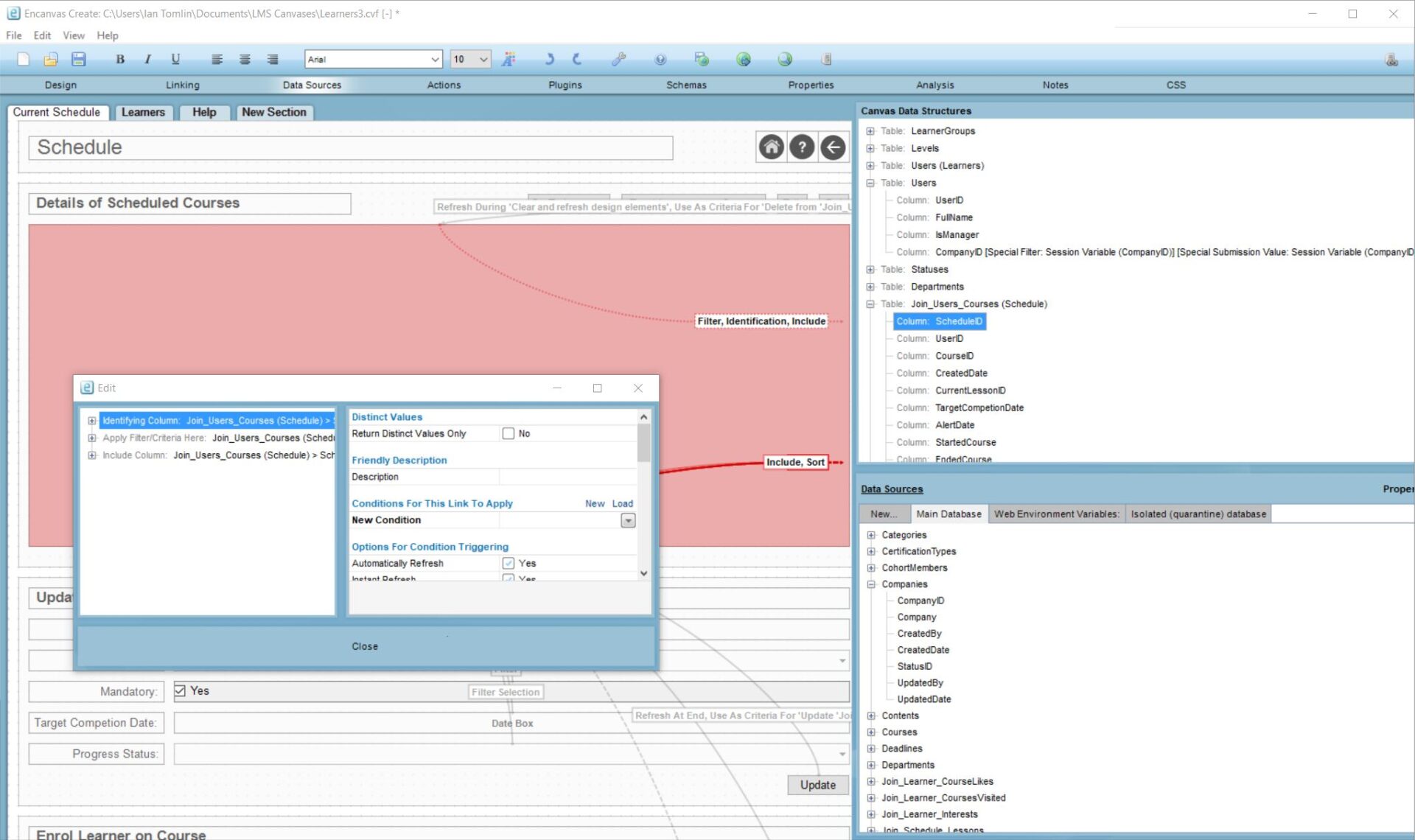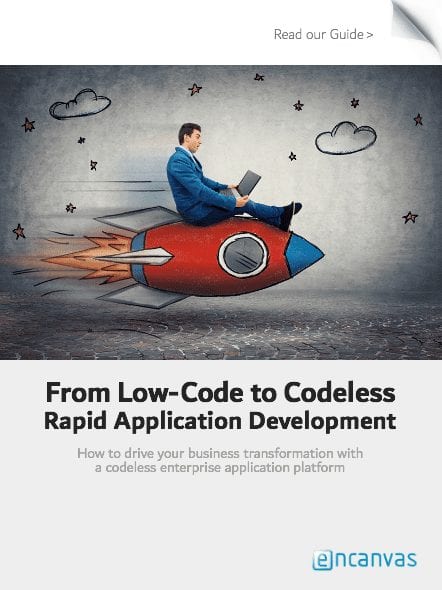GUIDE TO NO-CODE PLATFORMS
Our Guide to No-Code Platforms and rapid applications development includes everything you need to know about creating apps for your enterprise FAST without the coding.
A background to no-code platforms
Excerpts from our Guide to No-Code Platforms
How to drive your business transformation with a codeless enterprise application platform
Rise of the citizen developer
In 2018, analyst firm Gartner declared, ‘Everyone’s a developer.’ They defined a citizen developer as – ‘a user who creates new business applications for consumption by others using development and runtime environments sanctioned by corporate IT.’
In its latest report on the subject, Gartner suggests that, ‘By 2023, the number of active citizen developers at large enterprises will be at least four times the number of professional developers.’ They state ‘Business units increasingly control their own application development efforts, of which citizen development will play a crucial role in the future of apps.’
At encanvas, our audience of citizen developers is made up of ideas- people—the execs, analysts and marketers— those individuals who want to develop a software application to service a business need.
A market experiencing rapid growth
‘A 2018 market report by Report Buyer suggests that, ‘The low-code development platform market size is expected to grow from USD 4.32 billion in 2017 to USD 27.23 billion by 2022, at a Compound Annual Growth Rate (CAGR) of 44.49% during the forecast period.’
What to expect with codeless rapid application development
-
Tooling to develop,version-control, test, deploy, execute, administer, monitor and manage applications
-
A codeless approach to the creation of UIs, databases, business logic and data definitions
-
Support for development by citizens developers
-
One-click deployment
-
Support for enterprise-grade projects with:
-
High availability and disaster recovery
-
Secure access to application services
-
Technical support to customers
-
Third-party application access to application logic and/or data via APIs and/or event topics
-
Scope to add third-party DLL, code, script, data visualizations, mapping engines, algorithms etc.
-

Improving and shaping IT systems demands a partnership between IT and business stakeholders
Many organizations are prevented from rolling out the apps they need due to the lack of availability of IT resources.
Departments and users can take it on themselves to build their own apps using Excel and other desktop tools. This can drain corporate capacity, increase data security risks, and reduce the quality of apps.
The RoI of digital transformation platforms
McKinsey & Co. suggest companies with digital platforms enjoyed an annual boost in earnings before interest and taxes (EBIT) of 1.4 percent, compared with the 0.3 percent gains of non-players.
They go on to state that performance effects are cumulative, with EBIT improvements adding to early-year gains, so over a five- year period, platform players may capture an additional 10 percent in EBIT growth—a company’s 2 percent EBIT growth, for example, would increase to 2.2 percent in year five.
Source: ‘The right digital-platform strategy’, McKinsey & Co, May 2019
The value of digital transformation is recognized by employees too
A 2019 report by Zenzar found that employees too understand the value of having the right digital tools to get the job done.
More than three-fourths (76%) of the 1,000-plus survey group said having the digital tools they need at work makes them more productive. More than half (53%) said it makes them more successful.
The same share said they would be more empowered to better manage workflow if provided with the IT tools they needed, and 42% said it speeds up boring tasks. Some 68% of the 18 to 34 age group said having the digital tools they need at work makes them more productive.
That’s a significant share. But it’s even higher – at 80% – for the 35 to 54 age group. And a whopping 83% of workers age 55 and older agreed.
No-Code applications platforms like Encanvas are being used to drive Hyper-Automation in the enterprise


Interested to read more?
Rapid-Application Development (RAD) is a term used to describe any form of adaptive approach that speeds up the process of creating and deploying software applications.
The idea that smarter advanced programming languages and methods can speed up the task of developing software is nothing new. There’s been a long-running quest to improve productivity by allowing business people to generate their own programs using rapid application development tools.
Low-Code and No-Code (‘Codeless’) enterprise applications platforms look to reduce the time, cost, technical complexity, and risk of software development by negating the need to code or script, thereby improving all aspects of the application development lifecycle.
In this Guide to No-Code Rapid Application Development we explain how the market for RAD tools has evolved from Low-Code to No-Code (Codeless) tool-sets—and why.
To download this guide complete the form below. By submitting this form, you confirm that you have read and understood our privacy notice.
DOWNLOAD FORM
Encanvas No-Code is the fastest way to turn ideas into enterprise apps. Book a demo by completing our contact form and see the benefits of codeless application design

